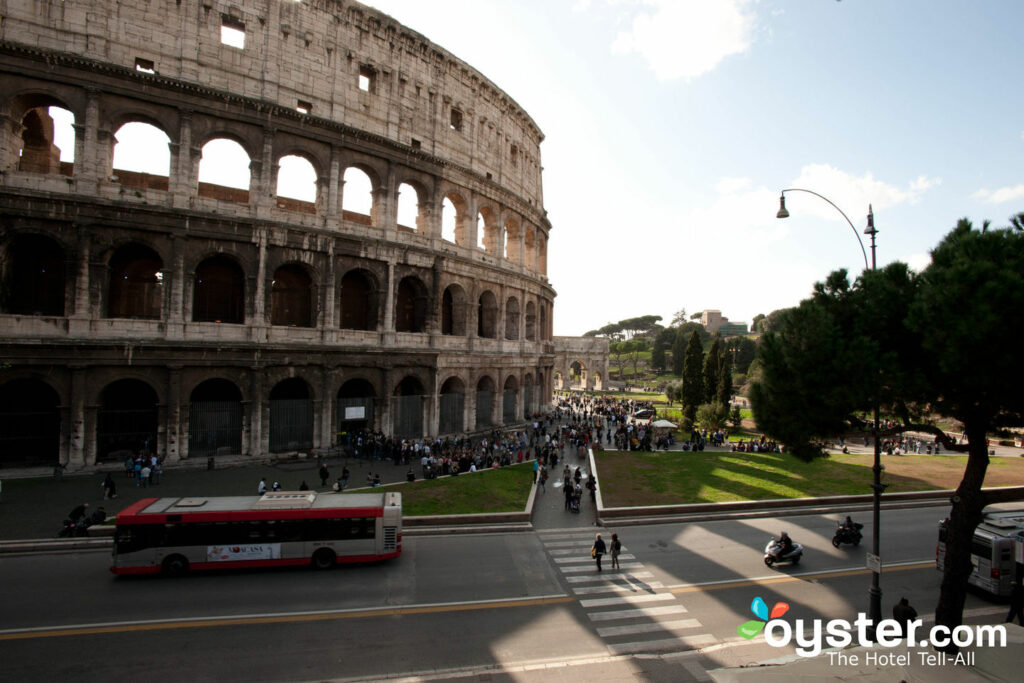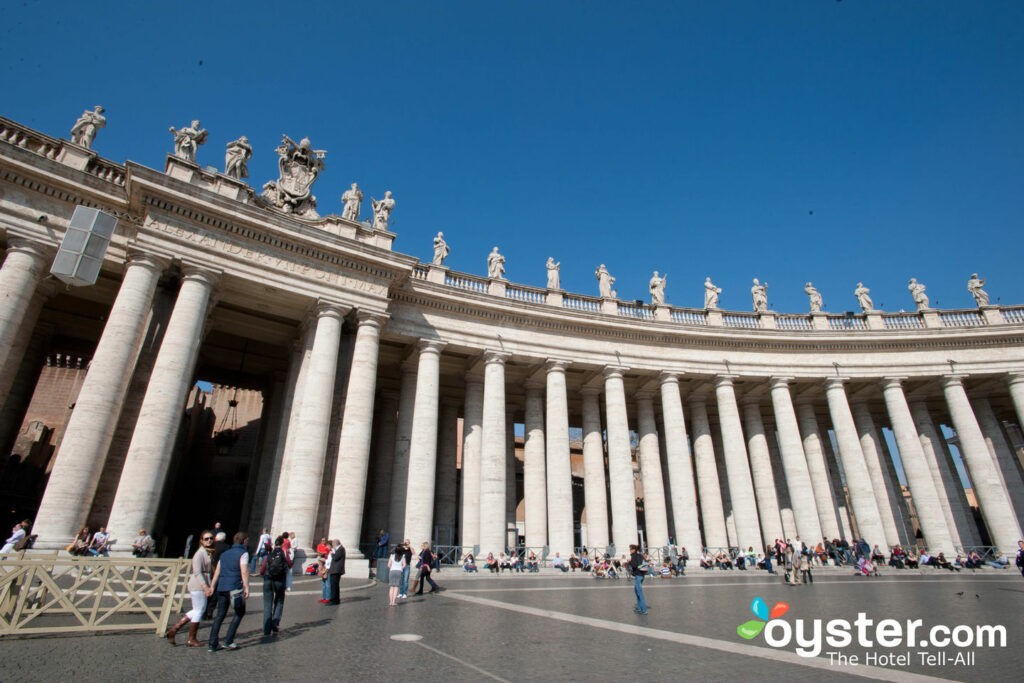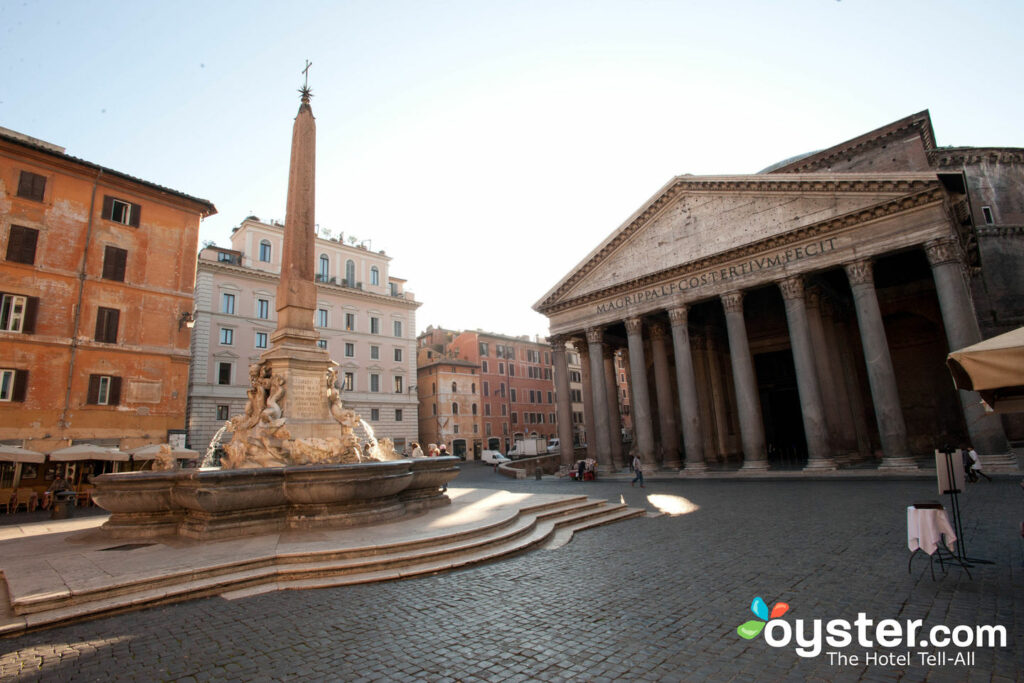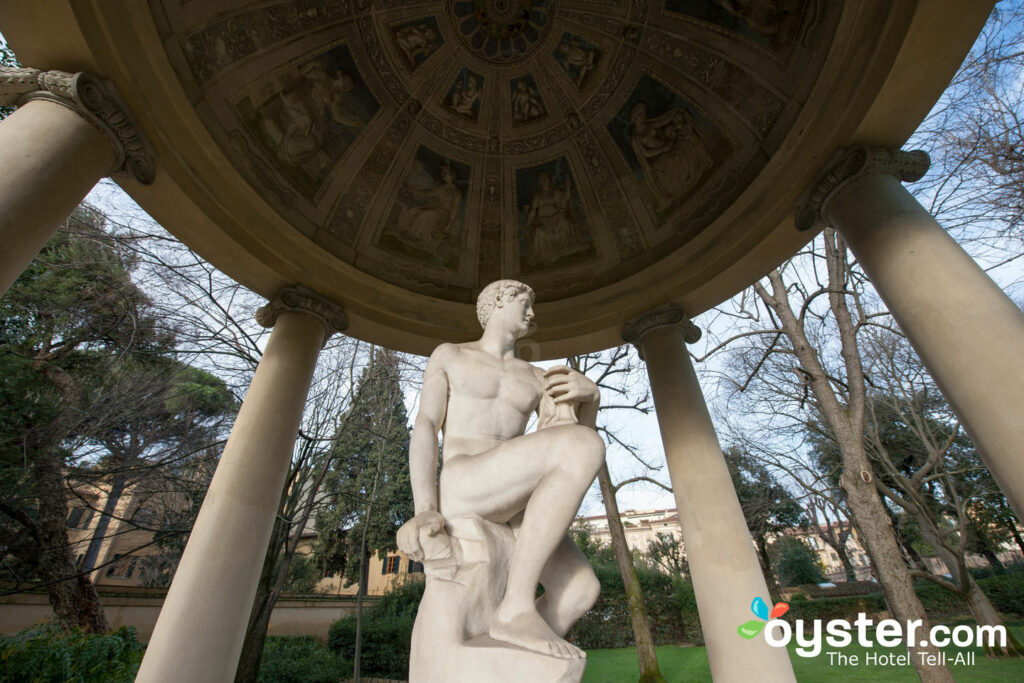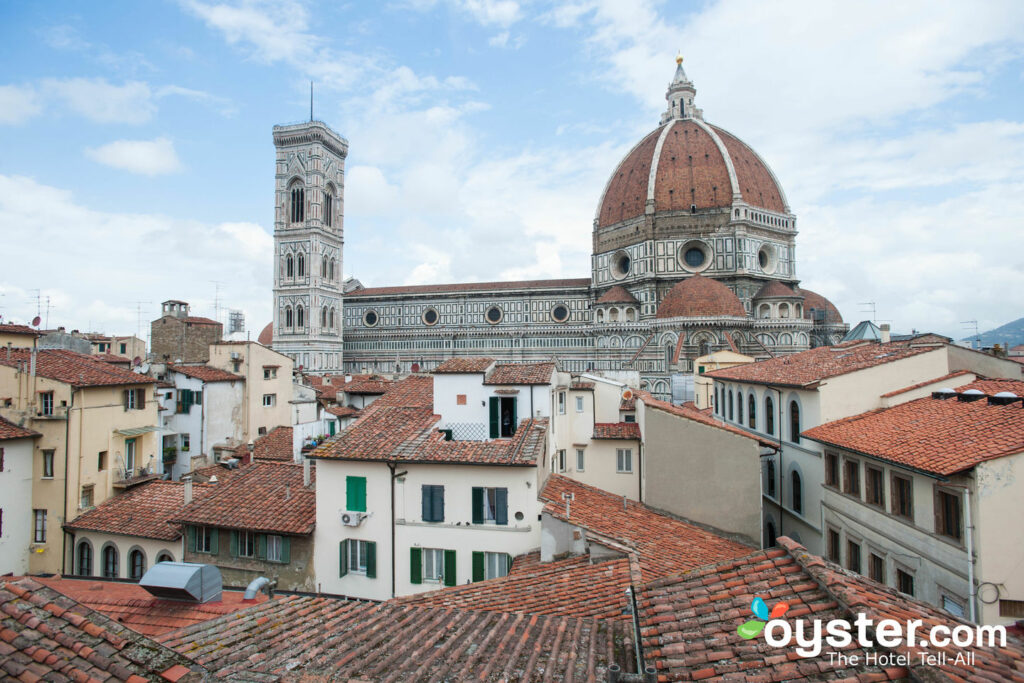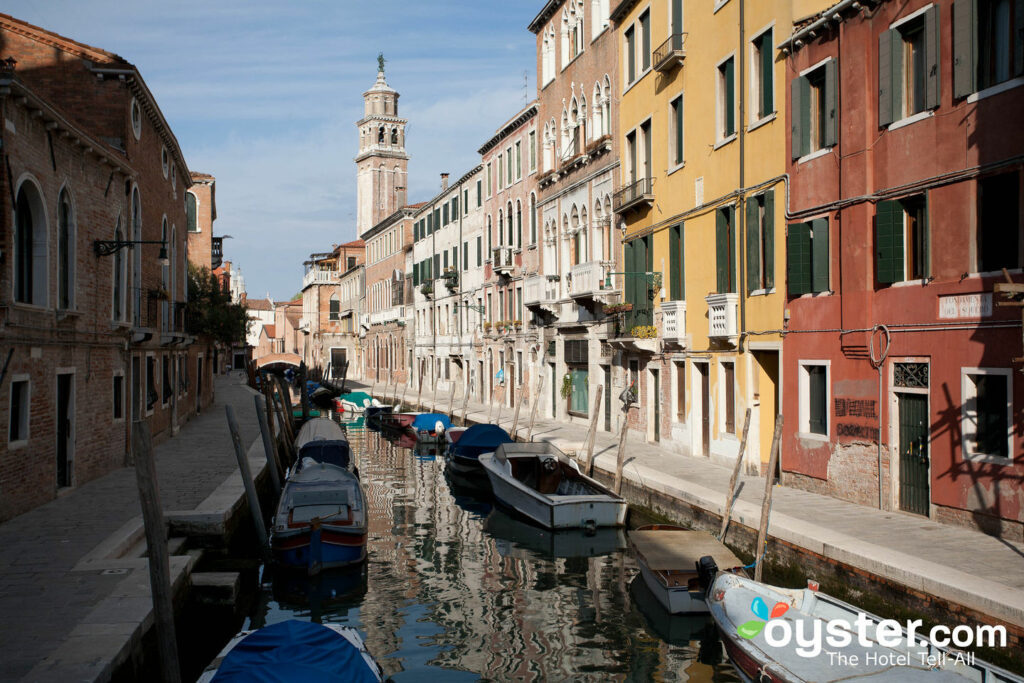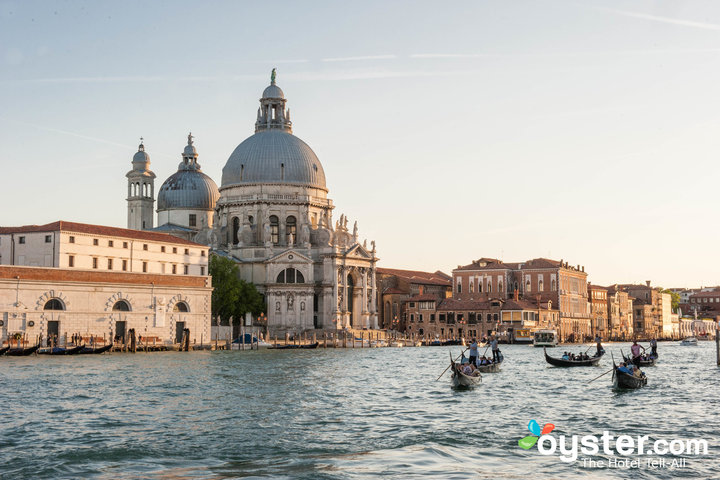Art buffs, architecture lovers, and pizza fans all have good reasons to spend a week in Italy, a country that has lots to see, admire, and eat. However, trying to spin through the Boot’s greatest hits, including the Vatican, Uffizi Gallery, and Venice canals, can be tough in seven days. That’s not to say it can’t be done -- you just have to plan carefully and make efficient use of the railway system. To help, we put together the ultimate week-long itinerary to Italy.
But before you pack your bags, prioritize what you want to spend your time on: world-renowned paintings and sculptures, ancient Roman architecture, or bottomless bowls of pasta. Why? Well, because you’re likely to run into a line that’s slower than expected and have to make a choice or two. Travelers who have more time in Italy might want to consider day trips or short stays in Cinque Terre and Tuscany. There’s also Naples and Sicily, two places that are tough to refuse. Lastly, keep in mind that summer (June to August) is high season and winter (November to March) is low season, so plan to adjust your schedule for big or small crowds accordingly.
Notice: Undefined offset: 4 in /nas/content/live/stagingstmllc/wp-content/plugins/smartertravel-shared/includes/ads/includes/api.php on line 92
Notice: Undefined offset: 5 in /nas/content/live/stagingstmllc/wp-content/plugins/smartertravel-shared/includes/ads/includes/api.php on line 92
Notice: Undefined offset: 6 in /nas/content/live/stagingstmllc/wp-content/plugins/smartertravel-shared/includes/ads/includes/api.php on line 92
Notice: Undefined offset: 4 in /nas/content/live/stagingstmllc/wp-content/plugins/smartertravel-shared/includes/ads/includes/api.php on line 98
Notice: Undefined index: pass_through_args in /nas/content/live/stagingstmllc/wp-content/plugins/smartertravel-shared/includes/ads/includes/api.php on line 158
Notice: Undefined index: wrapper in /nas/content/live/stagingstmllc/wp-content/plugins/smartertravel-shared/includes/ads/includes/api.php on line 159
Notice: Undefined offset: 4 in /nas/content/live/stagingstmllc/wp-content/plugins/smartertravel-shared/includes/ads/includes/api.php on line 92
Notice: Undefined offset: 5 in /nas/content/live/stagingstmllc/wp-content/plugins/smartertravel-shared/includes/ads/includes/api.php on line 92
Notice: Undefined offset: 6 in /nas/content/live/stagingstmllc/wp-content/plugins/smartertravel-shared/includes/ads/includes/api.php on line 92
Notice: Undefined offset: 4 in /nas/content/live/stagingstmllc/wp-content/plugins/smartertravel-shared/includes/ads/includes/api.php on line 98
Notice: Undefined index: pass_through_args in /nas/content/live/stagingstmllc/wp-content/plugins/smartertravel-shared/includes/ads/includes/api.php on line 158
Notice: Undefined index: wrapper in /nas/content/live/stagingstmllc/wp-content/plugins/smartertravel-shared/includes/ads/includes/api.php on line 159
Notice: Undefined offset: 4 in /nas/content/live/stagingstmllc/wp-content/plugins/smartertravel-shared/includes/ads/includes/api.php on line 92
Notice: Undefined offset: 5 in /nas/content/live/stagingstmllc/wp-content/plugins/smartertravel-shared/includes/ads/includes/api.php on line 92
Notice: Undefined offset: 6 in /nas/content/live/stagingstmllc/wp-content/plugins/smartertravel-shared/includes/ads/includes/api.php on line 92
Notice: Undefined offset: 4 in /nas/content/live/stagingstmllc/wp-content/plugins/smartertravel-shared/includes/ads/includes/api.php on line 98
Notice: Undefined index: pass_through_args in /nas/content/live/stagingstmllc/wp-content/plugins/smartertravel-shared/includes/ads/includes/api.php on line 158
Notice: Undefined index: wrapper in /nas/content/live/stagingstmllc/wp-content/plugins/smartertravel-shared/includes/ads/includes/api.php on line 159
Notice: Undefined offset: 4 in /nas/content/live/stagingstmllc/wp-content/plugins/smartertravel-shared/includes/ads/includes/api.php on line 92
Notice: Undefined offset: 5 in /nas/content/live/stagingstmllc/wp-content/plugins/smartertravel-shared/includes/ads/includes/api.php on line 92
Notice: Undefined offset: 6 in /nas/content/live/stagingstmllc/wp-content/plugins/smartertravel-shared/includes/ads/includes/api.php on line 92
Notice: Undefined offset: 4 in /nas/content/live/stagingstmllc/wp-content/plugins/smartertravel-shared/includes/ads/includes/api.php on line 98
Notice: Undefined index: pass_through_args in /nas/content/live/stagingstmllc/wp-content/plugins/smartertravel-shared/includes/ads/includes/api.php on line 158
Notice: Undefined index: wrapper in /nas/content/live/stagingstmllc/wp-content/plugins/smartertravel-shared/includes/ads/includes/api.php on line 159
Notice: Undefined offset: 4 in /nas/content/live/stagingstmllc/wp-content/plugins/smartertravel-shared/includes/ads/includes/api.php on line 92
Notice: Undefined offset: 5 in /nas/content/live/stagingstmllc/wp-content/plugins/smartertravel-shared/includes/ads/includes/api.php on line 92
Notice: Undefined offset: 6 in /nas/content/live/stagingstmllc/wp-content/plugins/smartertravel-shared/includes/ads/includes/api.php on line 92
Notice: Undefined offset: 4 in /nas/content/live/stagingstmllc/wp-content/plugins/smartertravel-shared/includes/ads/includes/api.php on line 98
Notice: Undefined index: pass_through_args in /nas/content/live/stagingstmllc/wp-content/plugins/smartertravel-shared/includes/ads/includes/api.php on line 158
Notice: Undefined index: wrapper in /nas/content/live/stagingstmllc/wp-content/plugins/smartertravel-shared/includes/ads/includes/api.php on line 159
Day One: Rome
Many international flights touch down in Rome early in the morning, which gives you time to check in, rest up a bit, and do a little sightseeing. Focus on some of the ancient architecture before the museums. After sitting on a long flight, you’ll probably enjoy the opportunity to stretch your legs. See the Colosseum, which was built in the first century A.D. by tens of thousands of slaves. The amphitheater hosted man versus animal contests, battle re-enactments, and dramas. It also had 36 trap doors for special effects. The same ticket will also let you see the Roman Forum. Once marshland, it was drained and turned into a venue for public speeches, elections, and gladiator battles. Many of the buildings were destroyed in earthquakes around 410 A.D., but there are still astounding columns and relics that demonstrate the capabilities of Rome’s engineers. In between, you may want to stop at Capitoline Hill for a taste of Michelangelo’s brilliance. While the area has been considered a center of the city since its founding, Pope Paul III Farnese asked the artist to rethink its design for a planned visit from Emperor Charles V in 1536. Construction on Michelangelo’s designs started in 1546, but weren’t completed until the 17th century, long after his death in 1564.
After all that walking, you deserve a hearty Italian dinner. Sforno is considered one of best neighborhood pizzerias. Flavio al Velavevodetto was founded by slow food honcho Carlo Petrini and serves classic dishes like carbonara and tripe.
Where to Stay:
Day Two: Vatican City
Get up early and head over to Vatican City. While this city-state within Italy is only 109 acres, there’s more than a day’s worth of things to see, so make sure you have plenty of camera space for pictures. St. Peter’s Basilica is the largest Christian church in the world and took 120 years to complete (even more if you include the masonry). And St. Peter’s Square is where the reverent gather to see the Pope give his blessing. The Vatican Museums have over 70,000 works, including rooms painted by Raphael, Leonardo da Vinci’s “St. Jerome in the Wilderness,” and Caravaggio’s “Entombment.” Plus, there are historic tapestries, sculptures, and artifacts to view. Overwhelmed by artistic brilliance? You’re just getting started. Of the hundreds of galleries, the Sistine Chapel is the big finish. Michelangelo painted the ceiling between 1508 and 1512. Five hundred years later, the art world still marvels over it — and you will, too. Take a break and consider ambling through the Vatican Gardens. If you have the focus, there are more wonders to see, including the Vatican Necropolis and Apostolic Palace.
After a full day of being on your feet, there’s a good chance you’ve worked up quite and appetite. Nearby restaurants include Arlu, which has been owned by the same family since 1959. Here, meals can easily last three hours with endless plates of spaghetti. For those who just want to focus on Italy’s savory pies, there’s Bonci Pizzarium, which offers more than just typical toppings, including selections like zucchini with ricotta and potato and mozzarella.
Day Three: Rome
Plenty of travelers spend a week or more in Rome. If you don’t have that luxury, your third day is going to be a bit scattered, unless you decide on a few things to see. Whatever you do, reserve enough time to take a late train to Florence, so you can start the next day there. Tip: You may want to check out early and leave your bags with the front desk to pick up later.
For many romantics, no trip to Rome would be complete without a hand-holding stroll past the 18th-century Trevi Fountain, which features Neptune emerging from the pool. Classic movie buffs may remember seeing it in Fellini’s “La Dolce Vita.” Once a Roman temple, now a Christian church, the Pantheon is celebrated as an architectural marvel, and is one of the best preserved Roman buildings. Completed early in the second century, the main part of the structure is a rotunda with the largest unreinforced concrete dome in the world. The layout of the Corinthian columns at the front of the building has been copied by architects around the world, so don’t be surprised if it looks familiar.
In the mood to work out? The neighborhood that’s home to the Spanish Steps also has a bit of designer shopping. The incline links the Spanish embassy to the Trinità dei Monti church at the top of the 135 steps. According to literary history, the location was a source of inspiration for both Balzac and Byron. Writing fans may also want to stop by the Keats-Shelley House, which includes memorabilia of Keats, Shelley, Wordsworth, and others. Movie fans may remember it from cameos in “Roman Holiday” and “The Talented Mr. Ripley.” Nearby, the Via dei Condotti has boutiques from designers such as Armani, Gucci, and Prada. Those who want to take a look at a bit of Rome’s lesser-known history may also want to head over to the Jewish ghetto, which combines Judaic culture with classic Roman architecture. Ba Ghetto is one of the most notable kosher restaurants in Rome and is heavily influenced by Libyan cuisine. Pasticceria Il Boccione is a 200-year-old bakery that sells Jewish pizza, a sweet bread with candied fruits and almonds. Pick up a few snacks for your upcoming train ride.
Buy your tickets in advance for the train from Rome to Florence. You’ll probably want to opt for the fast train, which takes about 90 minutes, versus the local, which can take as long as four hours. Buying tickets at the booth can also be more expensive. Oh, and if you haven’t bought tickets in advance for Florence’s Uffizi Gallery, be sure to do so.
Day Four: Florence
Florence was a major trading center in medieval times and one of the richest cities. The powerful Medici banking family helped make it prosper as a center for art during the Renaissance. Many of the great works of that period are collected in the Uffizi Gallery, including renowned pieces by Michelangelo, Leonardo da Vinci, Caravaggio, Rembrandt, Botticelli, Durer, and plenty more. Beware: If you choose to buy your tickets on-site, the wait on line can be as long as five hours during the high season. The shortest waits are usually in the early afternoon (a little after lunch) and not long before closing. Whenever you go, expect to plan to spend three to four hours in the galleries.
Then, head over to the nearby Piazza della Signoria, a museum with sculptures by Giambologna and Cellini. Walk around, then grab a seat at a cafe close by. You may also want to stroll past the Palazzo Girolami to the Ponte Vecchio bridge. Built in the 14th century after a flood washed away the previous bridge, the area is now home to Florence’s jewelry district. It can get crowded, so you might want to try a nearby bridge for a clearer view of the Arno river. For those who are ready for a bite, there’s Il Magazzino, a restaurant that serves authentic Tuscan dishes like as pasta with duck ragout and veal cheeks braised in red wine. Trattoria 4 Leoni is known for its pear-and-gorgonzola pasta and Tuscan beef stew, and Trattoria Cammillo serves pigeon pie (yes, you read that right).
If you have the time and stamina to view more beautiful art, head over to the Palazzo Pitti, a palace once inhabited by the Medici family and Napoleon The now-art museum houses works by Raphael, Titian, and Perugino, and boasts a collection of luxurious antiques, including jewelry and silverware.
Where to Stay:
Day Five: Florence
Set aside at least three hours to explore the Duomo complex, which includes the Cattedrale di Santa Maria del Fiore, Museo dell’Opera del Duomo, Battistero di San Giovanni, and Campanile di Giotto. Pace yourself and be prepared to appreciate a lot of masterful architecture and artwork in a very short time span. Built over the 13th and 14th centuries, the Cattedrale di Santa Maria del Fiore (also known as the Florence Cathedral), is most famous for its brick dome, which is the largest of its kind and was designed by Filippo Brunelleschi. To see it up close, you’ll need to scale 463 steps. Other interior highlights include the intricate floor tile work and frescoes of the Last Judgment. Next up: the Museo dell’Opera del Duomo (or Opera Duomo Museum), which features more than 750 sculptural works that were created for the complex’s buildings, including pieces by Arnolfo, Ghiberti, and Donatello. Giotto di Bondone designed the Duomo’s bell tower to look as if it’s painted, but in reality it’s colored with stone panels. Stretch your calves and start climbing the 414 steps to the top for a panoramic view of Florence.
By now, you’ll probably want to rest and refuel. Several notable restaurants are situated near the Duomo complex. Vini e Vecchi Sapori offers caprese salads, steaks, and traditional Italian fare. A couple of blocks away, Zio Gigi has dishes like risotto with squid ink and ribollita as well as a singing chef.
For the rest of your day in Florence, be mindful of your time. Sculpture aficionados will want to survey Michelangelo’s David at the Galleria dell’Accademia, though the other pieces here aren’t quite as magnificent. If you’re willing to settle for a replica, cruise by the one in Piazza della Signoria. Feeling a little cooped up from touring the museums? Consider a trek over to the Boboli Gardens. Here, you can stretch your legs and take in the manicured landscape. If you didn’t get to see the Palazzo Pitti already, you have a second chance to catch a glimpse, as it’s close to the gardens. Piazzale Michelangelo is a great spot to watch the sunset — and get a widescreen view of the city. If you haven’t bought your tickets for an early morning train to Venice, do so now.
Day Six: Venice
The train ride from Florence to Venice takes just over two hours. Once off the train, you’ll take a boat into the “floating city.” Taking a water taxi can be pricey (often 100 euros), but the water buses are more reasonably priced. After checking in, you may just want to wander through the streets for a little while before rushing to another attraction. Venice’s intricate system of pathways and bridges is one of the most amazing things about the city. Bring a detailed map or have a good one loaded on your phone. Even if you plot out your directions perfectly, you may get lost. That being said, finding your way is part of the fun.
Eventually make your way to Piazza San Marco (St. Mark’s Square). It’s considered the center of the city, and boasts several architectural marvels, including Basilica di San Marco. The church’s ornate facade and interior were inspired from both Italian and Byzantine design — and the shining mosaics gave rise to its nickname, Church of Gold. Tip: You may want to buy a ticket in advance to avoid waiting on line.
Doge’s Palace, which lies next to the basilica, has been reconstructed several times. Consider taking a guided tour through the building, as it helps to have someone explain the complicated history of the structure, which includes numerous secret passages. On the eastern side of the piazza, you’ll find St. Mark’s Clock Tower, with a timepiece large enough to be seen from the lagoon. If you get a St. Mark’s Square Museums combined ticket, you’ll not only get admission into Doge’s Palace, but also Museo Archeologico Nazionale, which has a notable selection of Greek and Roman statues, as well as the Biblioteca Nazionale Marciana, which has one of the oldest text collections in Italy. Finally, take in the city from the San Marco Campanile (the bell tower). No, you don’t have to climb any more steps. Instead, take an elevator to the top of the tallest building in the city for a bird’s eye view.
For a nearby dinner or late lunch, try La Caravella. It opened in the 1960s and is still serving top-notch regional cuisine, including dishes like sweet-and-sour sardines with raisins and spider crab with lemon sauce. Ristorante Quadri, the only restaurant overlooking the square, has earned a Michelin star for its mix of traditional and contemporary dishes such as hare risotto with foie gras sauce and beef cheeks with polenta dumplings.
Where to Stay:
Day Seven: Venice
On your last day in Venice, take your time. You may want to consider a guided or self-guided walking tour. Consider one that allows you to amble through the Rialto area, which has a famous market. Nearby is Ca’ Rezzonico, a museum of 18th-century Venetian life. It’s the perfect stop for those who love tall wigs, puffy dresses, and Baroque design. Modern art fans should check out the Peggy Guggenheim Collection. She’s the niece of Solomon R. Guggenheim, whose name appears on New York’s art museum. Peggy’s collection includes pieces by Braque, Duchamp, Dali, and Pollock. Plus, the house itself is an 18th-century palace.
Lastly, while a gondola ride can be pricey, a boat ride down the Grand Canal is worth it, as you’ll see the different waterside homes and palaces. And as difficult as it will be to leave Venice, you’ll need to set aside three-and-a-half hours for the train ride back to Rome. Again, make sure to buy your tickets in advance.
If You Have Three or More Days…
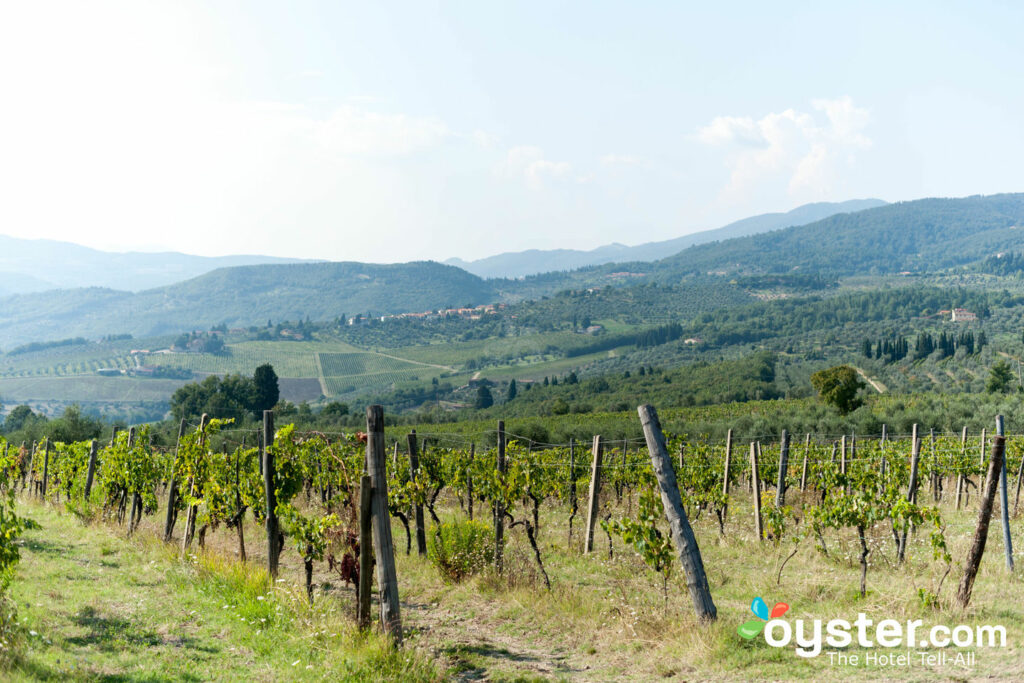
If you have more time to spend in Italy, consider taking day trips from Rome, Florence, or Venice. Naples is about 70 minutes away from Rome by train. Once there, pizza fanatics can go on a tasting crawl. Pompeii and Mount Vesuvius are also close, so you can take a look at what happens when a volcano erupts, too.
If you’re in Florence, rent a car and drive through Tuscany. This is the first step to living out your “Under the Tuscan Sun” fantasies. In fact, plenty of travelers spend all of their time in Tuscany alone. Of course there are great wineries throughout the region as well. Specific destinations include Pisa (as in Leaning Tower of), Siena (which has beautiful churches), and San Gimignano (which offers a taste of Italy in the Middle Ages).
From Venice, Padua is only 25 minutes away by train. Founded in the 12th century B.C., it’s one of the oldest cities in Italy, and home to a lot of historic architecture and art. If you want to spend more time on water, however, take a boat from Venice to the lagoon islands and visit the artisans who live there.
NOW WATCH: The Best Itinerary for Italy
https://www.youtube.com/watch?v=4mnEJmrb9jI
You’ll Also Like:
- 10 Incredible Hilltop Towns in Italy
- 8 Italian Castle Hotels That Are a Fairytale Come True
- 17 Things You Probably Didn’t Know About Rome
- When in Rome…Stay at These Amazing Hotels
All products are independently selected by our writers and editors. If you buy something through our links, Oyster may earn an affiliate commission.
